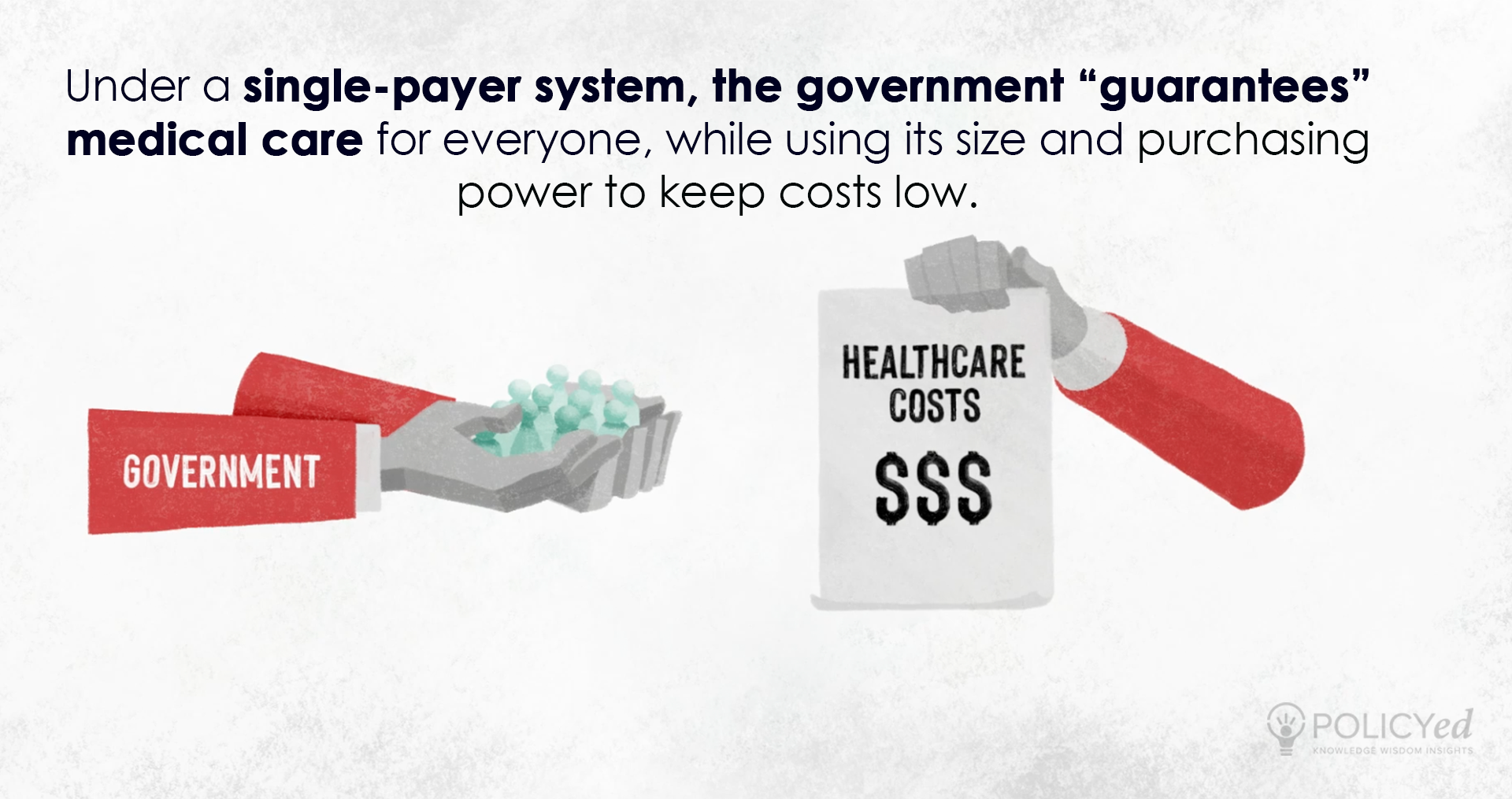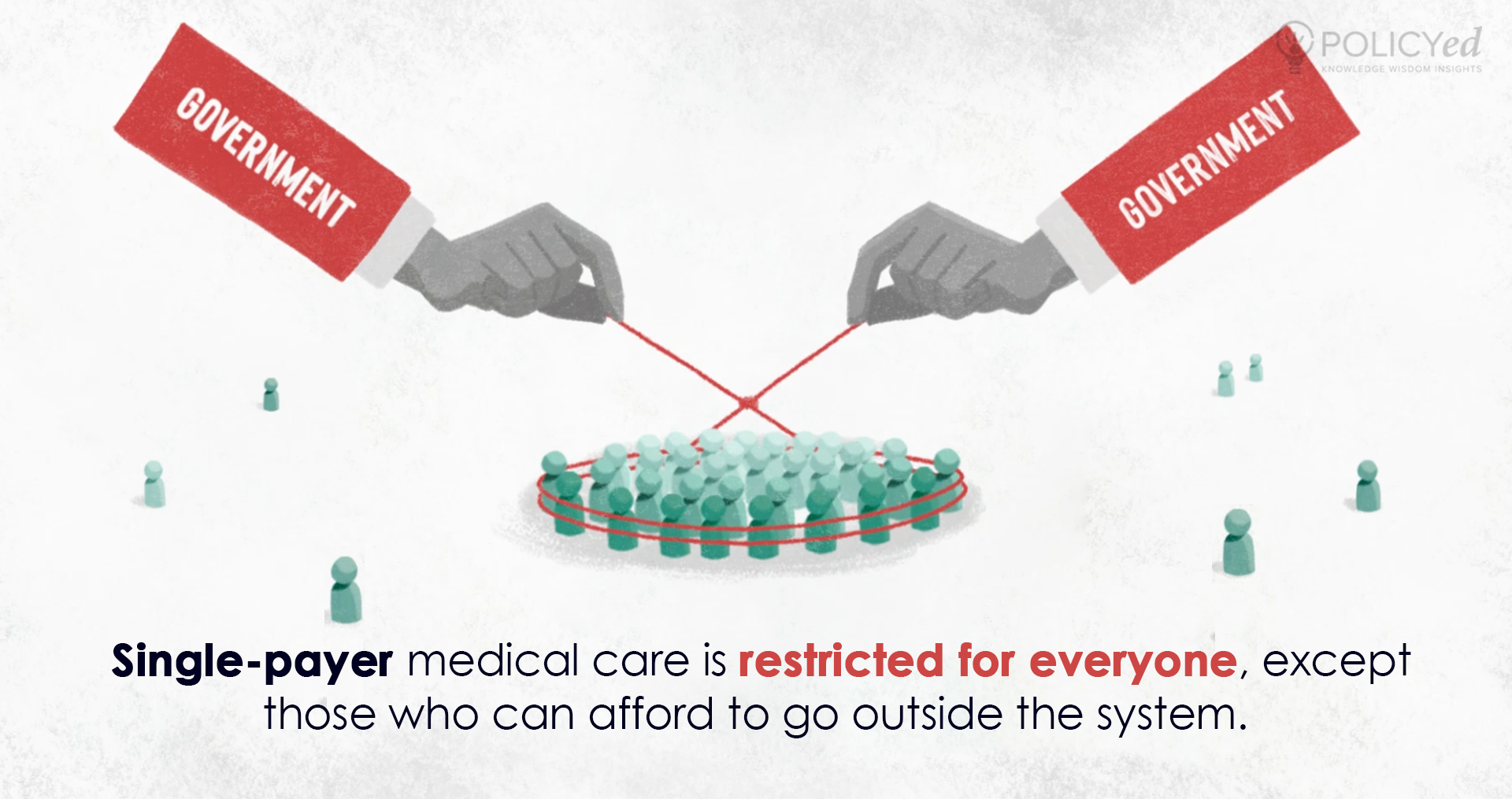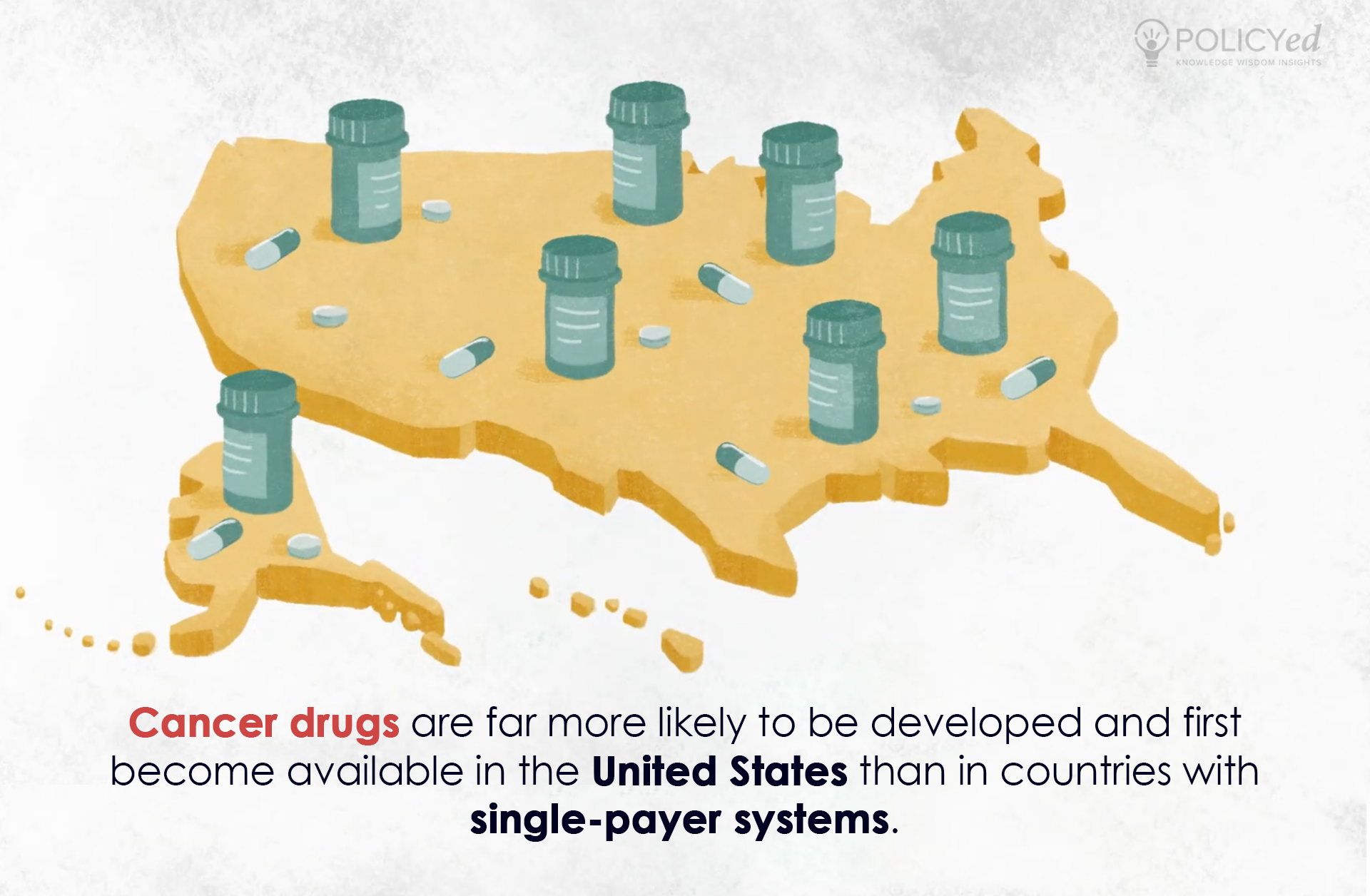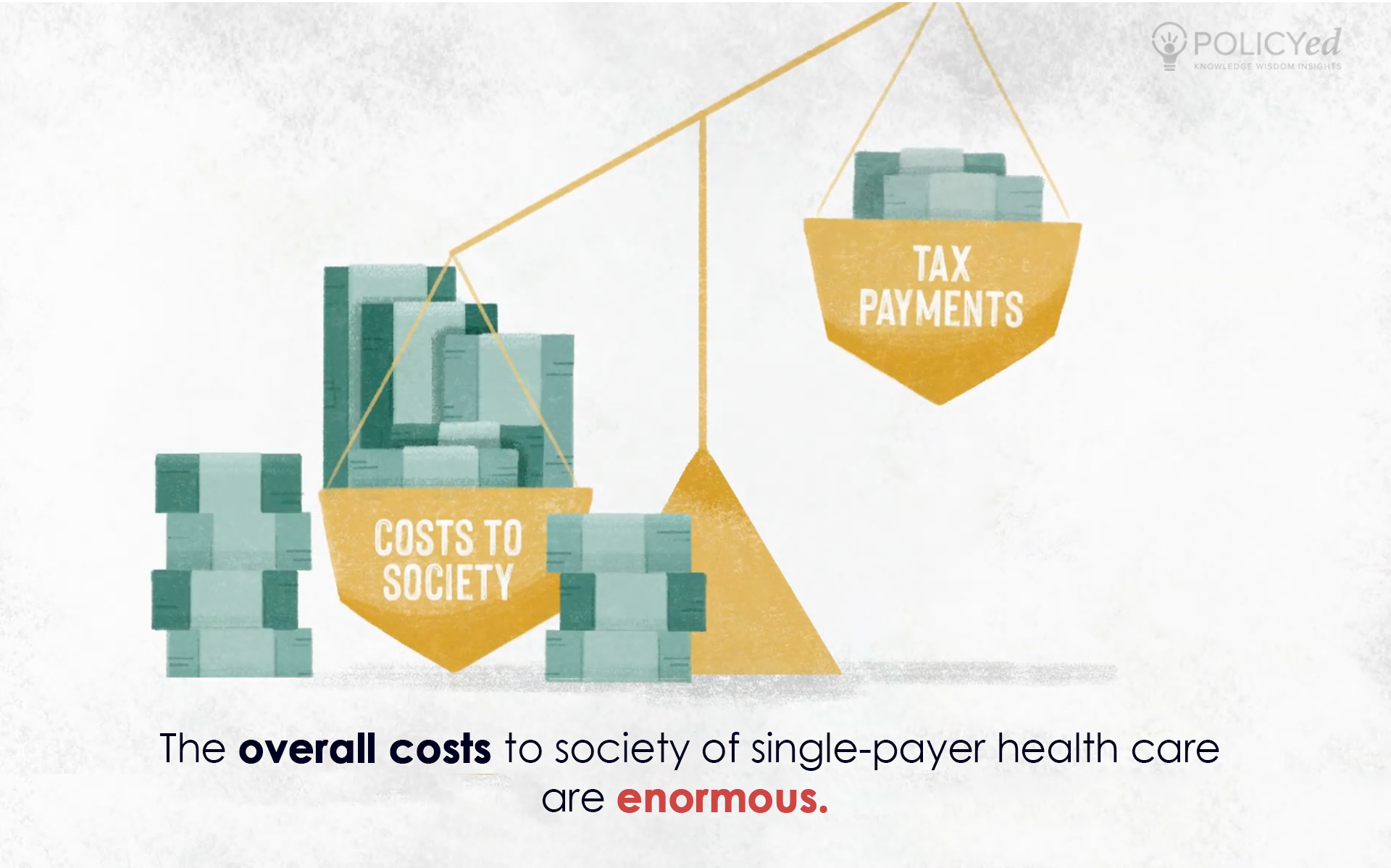Key Takeaways
What Is Single-Payer Health Care?
Socialist countries centralize the payment and delivery of goods and services. In health care, the model of centralization is a single-payer system. Support for single-payer healthcare is driven by a simple concept: the government “guarantees” medical care for everyone, while using its size and purchasing power to keep costs low.
False Promises
Single‐payer systems are making a false promise—medical care is overtly restricted for everyone except those who can afford to go outside the system. To contain costs, single-payer systems limit the availability of doctors, treatments, medications, and technology. The result is the ultimate cost imposed on societies that use single-payer health care: worsened outcomes from diseases, more deaths, and more disability.
Comparing Health Care Systems
Cancer drugs are far more likely to be developed and first become available in the United States than in countries with single-payer systems. Of the world’s fifty-four new cancer drugs launched from 2013 to 2017, 94 percent were available in the United States after two years compared with 70 percent in the United Kingdom, 53 percent in Canada, and only 43 percent in France. It is no surprise that the United States, with its freer markets, has the world’s best outcomes from cancer.




